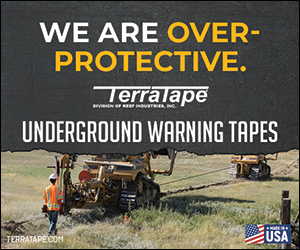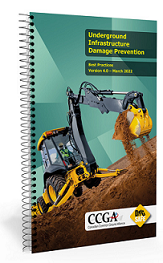 |
|||||||||||||||||||||
| Archive | Subscribe | Send to a Friend | DigSafeCanada.ca | Dig Safe | |||||||||||||||||||||
Top Story
Sponsorship packages have been selling rapidly and are nearly sold out. Don’t miss out on your opportunity to get exposure at the upcoming Symposium. For more information, contact Tyson Soyka tyson@canavents.com or click here to view the remaining packages: https://na.eventscloud.com/website/40572/sponsorship-opportunities/
Les forfaits de parrainage se vendent rapidement et sont presque tous vendus. Ne ratez pas l’occasion d’augmenter votre visibilité lors du prochain symposium. Pour plus d’informations, contactez Tyson Soyka à tyson@canavents.com ou cliquez ici pour connaître les autres forfaits : https://na.eventscloud.com/website/40572/sponsorship-opportunities/ National News
Source: Environmental Science & Engineering Magazine Manitoba has announced more than $34.4 million in funding, primarily for a series of wastewater management projects. The largest of the upgrades consists of $9.1 million in federal and provincial funding to expand the City of Dauphin’s lagoon reactor system for ammonia reduction and disinfection in the west of the province. Dauphin officials, who are contributing $3.3 million to the upgrades, also plan to add a new sewage treatment facility and new pipes. Source: University of Calgary Founded in 1993, the Canadian Energy Pipeline Association (CEPA) has for the past 28 years served as a non-partisan voice in the pipeline sector, promoting safety, sustainability and innovation. And while they may have closed their doors late last year, as its membership of pipeline companies moved in different directions, CEPA’s legacy lives on at the University of Calgary, in the form of a gift supporting the Pipeline Engineering Centre and a new endowed scholarship. “When considering the best place to house CEPA’s legacy, we looked at several options, including member companies and other post-secondary institutions,” says Chris Bloomer, CEPA’s outgoing president and CEO. “I have to give kudos to the University of Calgary, who came back to us with a very deliberate and focused plan that really captured what we were trying to do.” Source: Water Canada One of the most tangible and costly effects of global climate change is major, often catastrophic, floods. In Canada, where upwards of seven million people live in either a coastal or riverine flood plain, it’s clear that the impact of climate change-driven massive precipitation events, spring freshets, and rising lake levels have been taking an increasingly heavy toll on Canadian communities in recent years. At the same time, the recorded instances of urban flood events in Canada have been steadily mounting over the past decade, with the costs of repairing the damage caused to residential properties—particularly the flooding of home basements—cumulatively registering in the hundreds of billions of dollars during this period.
Regional Partners
Commençons d’abord par une clause de non-responsabilité – non ce n’était PAS une campagne entièrement numérique. Or, cet événement montre comment les aspects numériques de la campagne ont entraîné des clics. Pas de théorie, pas d’estimations, pas de suppositions… juste des clics! Comme chaque printemps, Utility Safety Partners procède au lancement de sa campagne publicitaire dans toute la province pour rappeler aux propriétaires et aux entrepreneurs qu’ils doivent soumettre leurs demandes de localisation avant d’excaver. Elle leur rappelle aussi l’importance de regarder ce qui se trouve au-dessus des travaux d’excavation afin d’y déceler des lignes électriques aériennes à proximité. Nous avons toujours su que cette campagne était importante, car cela se traduit par une hausse des activités à notre centre de notification. La hausse des visites et des demandes de localisation faites sur notre site Web confirme son importance.
Committee News
Le CCGA a récemment publié la version 4.0 de l’une de ses publications emblématiques, soit le Manuel des pratiques d’excellence. Vous y trouverez le savoir collectif de centaines de personnes de partout au Canada. Les pratiques d’excellence de ce manuel ont toutes été créées après avoir obtenu le consensus d’innombrables intervenants. Elles indiquent la meilleure façon de prévenir les dommages, et ce, de manière plus détaillée que ce que la législation, la réglementation ou les normes ne pourraient jamais accomplir. |
|||||||||||||||||||||
|
|||||||||||||||||||||












